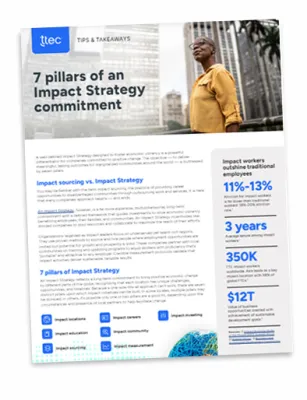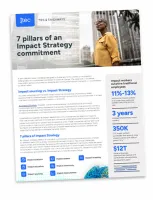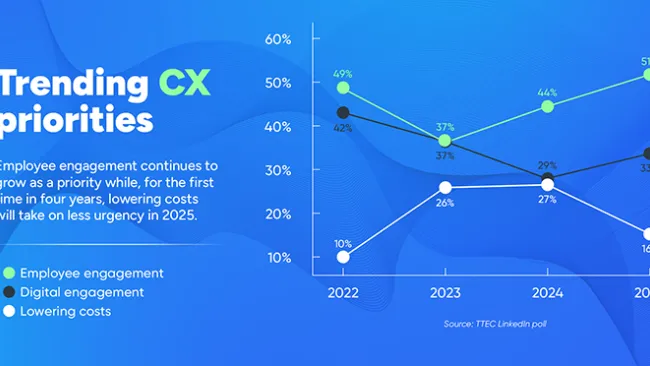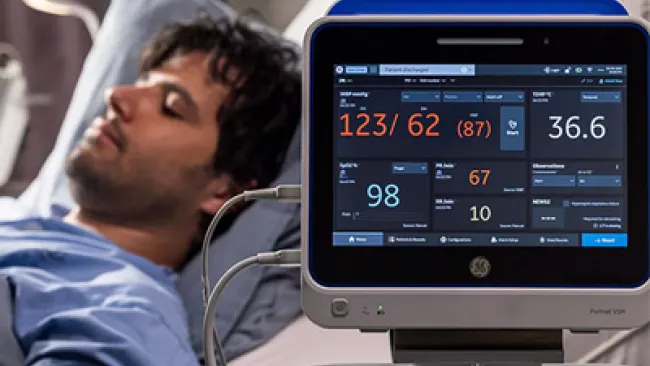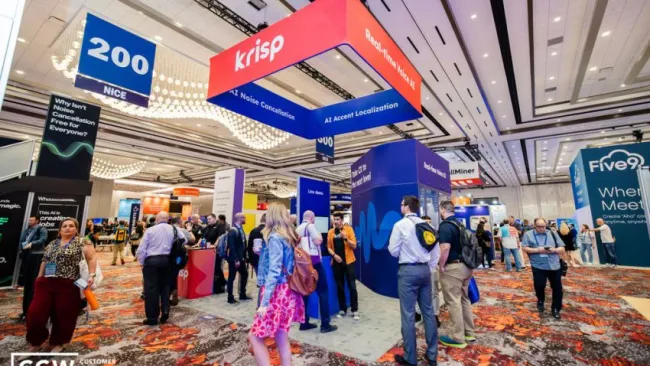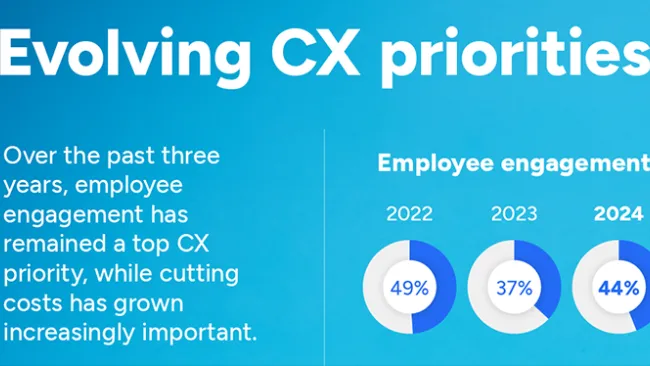In any organization, it’s essential for people, process, and technology to coexist. As people and devices become more connected, we need to reconsider how front-line associates can meet the rising expectations of tech savvy and demanding consumers.
For too long, we’ve seen organizations stick to traditional instructor-led classrooms or clunky mobile learning sessions. These antiquated teachings are often dull, rushed, and provide little to no real-time feedback. There’s a growing need to incorporate artificial intelligence (AI), machine learning, and digital innovation into employee training programs to keep front-line associates engaged, motivated, and up-to-speed on what customers will ask when they contact a company.
According to findings from O’Reilly Media, 61 percent of companies are aiming to make AI and machine learning a bigger initiative. Their potential is vast to help employees learn and develop their skills in a more personalized and empowered environment with the help of chatbots, augmented operational learning environments, collaborative knowledge tools, and an employee-centric mindset.
Firms can now enable a continuous, personalized learning journey for front-line associates in nearly any industry. For example, augmented and collaborative AI learning can be incredibly useful in the retail environment, where associates are rarely prepared for fluctuating customer volumes. Typically they’re trained in a one-size-fits-all program as if all hours are the same. Instead, companies should apply digital tools to create a learning environment that simulates a variety of experiences.
Each associate can choose a scenario to practice. And if new hires want personal insight, they can access collaboration tools where more experienced associates share their best practices. Companies can create learning programs that capture and leverage actual experiences and data created by associates to inform improvements to the knowledgebase and training programs. So how do they do it?
Artificial employee training leads to real results
AI, machine learning, and bots can help company leaders better understand their people, while also driving brand advocacy and results. Some approaches include feeding internal employee and external customer feedback, ratings, comments, and other social behavior to bolster the employee knowledgebase in near-real time. The information updates learning materials while providing employees with the right information at the right time. And the beauty is that the system gets smarter based on employees’ responses and preferences, ensuring they and their future coworkers go through the same consistent, knowledgeable training experiences.
Another application of digital tools is to look (and listen) closely to the recorded conversations and feedback associates have with practice bots during onboarding and training. Trainers can personally address each associate’s interaction to get a unique perspective on a topic or issue. They will do a better job at listening to employees while taking action on their feedback in real time to improve the curriculum or processes. It gives associates a platform to provide feedback and feel like they contribute to the organization.
Another method is to simply make learning courses available 24/7 to users in the platform they prefer—mobile devices. Students will be more likely to complete the training, and enjoy the extra flexibility.
Yet even with the right tools, leaders need to look at the complete employee lifecycle and operational business metrics or learning programs—not just isolated training events. The approach must be a repeatable and scalable technology-meets-humanity, personalized program that enables the efficient upskilling of new and existing employees, from front-line personnel all the way to the executive office. Combining the right technology, communication strategy, gamification model, and incentive program will help trainees be successful.
Getting real with RealPlay™ AI
In our own space, our patent-pending RealPlay AI solution employee learning model is designed to be an innovative simulated learning model that allows participants to interact in real time with an AI bot conducting training scenarios.
In our training scenarios, the bot plays the role of a customer. It reacts to the accuracy, confidence, word choice, sentiment, and behaviors of the learner, replicating a real customer experience. This allows associates to learn and accelerate through training at their own speed. Facilitators also have opportunities to work with medium and low performers to improve their training experience.
Additionally, the platform supports voice and chat simulations and is completely on-demand. Trainees are in control of which scenario to run, with each interaction being captured and available through an analytics engine. The results are ready for the trainee and his or her supervisor immediately after each RealPlay interaction (see Figure 1).
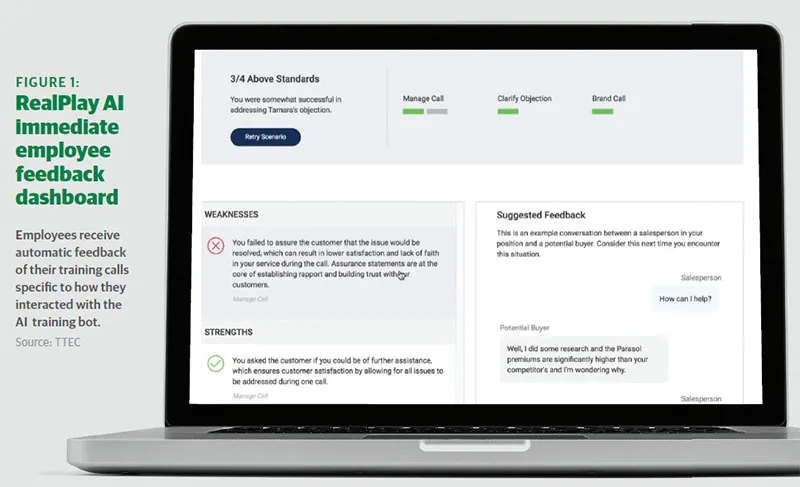
The data is presented in an engaging and practical way. Game-based mechanics drive real-world behavior change using points, badges, rewards, and status to encourage users to interact with the company, all compiled with the AI and real-time analytics. Meanwhile, feedback and analytics fuel the RealPlay bots. Specific to knowledge management, gamification practices are then employed to motivate and reward employees and customers for providing feedback.
Benefits and results of AI-enabled learning
There are many cost and quality benefits to using RealPlay AI to streamline employee learning. First, it expedites the training time. Learners can self-pace their training, which can be done during breaks or at home, so learners can be more productive during working hours. This also gives the facilitator the chance to oversee more students, rather than stand in the front of the room and teach students in a static, classroom environment. Also, the real-time feedback optimizes students learning the right behaviors. Immediate coaching can shorten onboarding and nesting periods by up to 20 percent. And the AI-driven environment also focuses on lessons so students achieve operational and quality KPIs in less time.
Overall, the learning model has been used to reduce training time by up to 44 percent and speed to proficiency by at least 90 percent compared to a client’s existing training program. By using intelligent machines, we help clients meet the quick ramp requirements and rapidly can pivot more than 50,000 service associates to be proficient in new service skills every year. The solution is being deployed for ongoing associate training, as well.
Employee training innovation is at full speed
The entire nature of learning is evolving, as consumers rely more on self-service, visual learning, collaboration, and information on-demand. Remember that this evolution is happening to associates, as well. They need constant feedback tailored for them. Be ready to help them learn and develop with a mix of humanity and personalized technology.
And while AI and automation are great additions to learning programs, they themselves will not be the sole solution. Technology isn’t meant to automate humans out of the training process, but rather enhance it since the human element is what differentiates experiences, both now and in the future.



